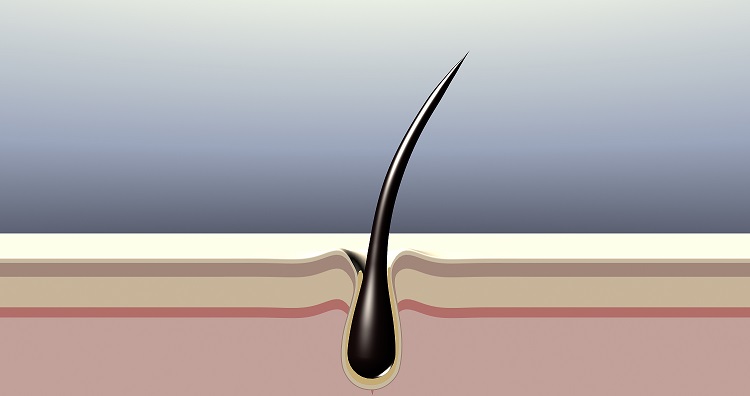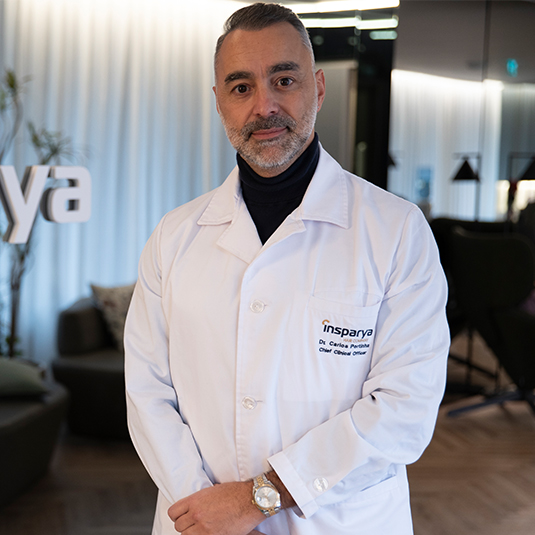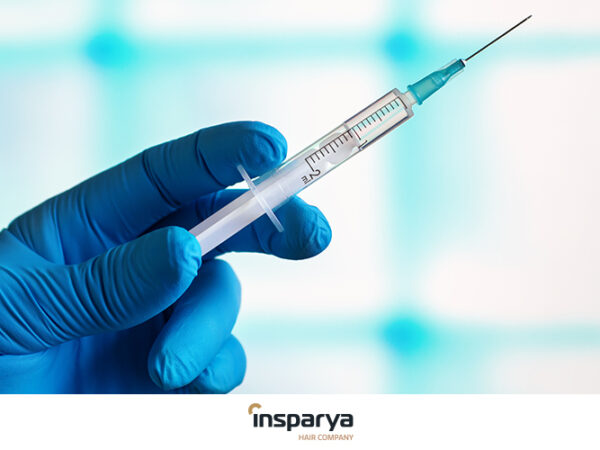
Folículo piloso: todo lo que necesitas saber sobre su estructura y cuidado
- ¿Qué es un folículo piloso y cuál es su función?
- El ciclo de vida del folículo piloso
- ¿Cuánto tarda en regenerarse el folículo piloso?
- Fases del crecimiento capilar: anágena, catágena y telógena
- Problemas comunes del folículo piloso
- ¿Cómo saber si el folículo piloso está dañado?
- ¿Qué pasa si se daña el folículo piloso?
- Folículo piloso inflamado: causas y soluciones
- ¿Qué debilita el folículo piloso?
- Foliculitis: inflamación e infección del folículo piloso
- ¿Qué recomiendan los dermatólogos para la foliculitis?
- Foliculitis tratamiento definitivo: opciones médicas
- ¿La foliculitis es contagiosa?
- Identificación de la foliculitis: síntomas y fotos
- Cuidado y mantenimiento de los folículos pilosos
- Prevención de daños en el folículo piloso
- Tratamientos para folículos pilosos dañados
- Cómo estimular la regeneración del folículo piloso
- Factores que afectan la salud del folículo piloso
El folículo piloso es el entorno de donde emerge el cabello y se mantiene vivo, el lugar en donde encuentra todos los nutrientes y cuyo cuidado es clave para una buena salud capilar. A continuación, te contamos todo sobre cómo funciona y de qué formas podemos mantener saludables los folículos pilosos del cuero cabelludo para que realicen su labor correctamente.
¿Qué es un folículo piloso y cuál es su función?
El folículo piloso es una estructura de la piel de la que nace el cabello y al que, a la vez, se encarga de alimentar. Podríamos decir que es el «hogar» de cada pelo del cuerpo, el sitio en donde puede conseguir los nutrientes necesarios para crecer.
En resumen, la función principal del folículo piloso es producir cabello. Esto sucede a lo largo de un ciclo de crecimiento que tiene tres fases: anágena (crecimiento), catágena (transición) y telógena (reposo).
¿Qué contiene el folículo capilar?
El folículo capilar es una estructura compleja con estas partes:
- Papila dérmica: se encuentra en la base del folículo. Contiene vasos sanguíneos que suministran nutrientes y oxígeno que son el alimento esencial gracias al que el cabello crece con normalidad.
- Matriz: es donde se producen nuevas células capilares, que acabarán desencadenando el crecimiento del pelo.
- Tallo del folículo: es la parte del folículo que rodea el pelo y se extiende desde la superficie de la piel hasta la papila dérmica.
- Glándula sebácea: asociada a cada folículo, produce sebo o grasa, que ayuda a hidratar y proteger el cabello.
¿Qué parte de la piel alberga los folículos pilosos?
Los folículos pilosos se encuentran en la dermis, que es la capa de la piel situada justo debajo de la epidermis o capa más externa. Al estar en la dermis, en donde se encuentran anclados, los folículos reciben los nutrientes a través de la circulación sanguínea.
Hay que tener en cuenta que la densidad y distribución de los folículos pilosos depende sobre todo de la zona del cuerpo, aunque también varía de una persona a otra, según su cantidad y tipo de cabello.
El ciclo de vida del folículo piloso
Que el ciclo de vida del folículo piloso se desarrolle con normalidad, respetando las etapas de crecimiento, transición y reposo de cada pelo, es sinónimo de una buena renovación del cabello y, por tanto, de una buena salud capilar.
¿Cuánto tarda en regenerarse el folículo piloso?
El tiempo de regeneración de un folículo piloso puede variar mucho. Dependerá, sobre todo, de la genética, de la edad y del estado de salud general de la persona, si bien lo habitual es que un ciclo de vida completo desde el crecimiento hasta la caída dure entre tres y cinco años.
Pero siempre hay otros factores que pueden afectar a esta duración: desde el estrés a la alimentación o las alteraciones hormonales, el ciclo de vida del folículo piloso puede acelerarse o ralentizarse.
Fases del crecimiento capilar: anágena, catágena y telógena
Cada folículo piloso es independiente, por eso conviven cabellos en diferentes fases del ciclo de crecimiento. De lo contrario alternaríamos períodos con pelo y otros de calvicie, algo que no sucede.
Sin duda, entender las fases del crecimiento capilar e identificarlas es primordial a la hora de diagnosticar y tratar problemas relacionados con el cabello y el cuero cabelludo:
- Fase anágena o de crecimiento: es la fase más larga del ciclo del cabello. Dura entre dos y seis años y, de hecho, su duración determinará la longitud del cabello. A lo largo de esta fase el pelo crece activamente desde las células en la base del folículo.
- Fase catágena o de transición: tras la fase anágena, el cabello entra en la fase catágena, que es mucho más corta, con una duración de entre dos y tres semanas. En esta etapa, el folículo se encoge y el cabello detiene su crecimiento, preparándose para la fase de reposo.
- Fase telógena o de reposo: finalmente, el cabello entra en la fase telógena, que puede durar unos tres meses. Durante este tiempo, el cabello no crece, pero tampoco se cae de forma abrupta. Al final de esta fase, el cabello antiguo sí se pierde y empieza a crecer el nuevo cabello. Con esto se marca el inicio de una nueva fase anágena.
Problemas comunes del folículo piloso
Es bastante frecuente que se desarrolle algún problema en los folículos pilosos, por eso resulta esencial cuidar el cuero cabelludo y el cabello con una higiene adecuada y, sobre todo, con productos capilares de calidad. Así prevendremos molestias que pueden derivar en casos más incómodos, como la foliculitis, y hasta provocar la caída del cabello al dañarse por completo el folículo.
¿Cómo saber si el folículo piloso está dañado?
Hay varios signos de daño en los folículos pilosos que se deben valorar. Los más comunes incluyen la caída excesiva del cabello, su adelgazamiento, que se rompa con facilidad, que no crezcan cabellos nuevos o que haya cambios en la textura. Estos síntomas indican que los folículos no están funcionando como deben.
¿Qué pasa si se daña el folículo piloso?
Cuando un folículo piloso se daña, puede provocar la pérdida permanente o temporal del cabello, según sea la gravedad de ese daño. En resumen, un folículo dañado puede dejar de producir cabello nuevo, con una consecuencia clara: áreas de cabello más fino y debilitado y hasta zonas con calvicie. Además, el cabello que sí crece puede ser frágil y romperse fácilmente.
Folículo piloso inflamado: causas y soluciones
La inflamación de los folículos pilosos, conocida como foliculitis, puede tener varias causas: desde una infección bacteriana, a un daño físico como un golpe o un roce, o reacciones alérgicas. También puede desencadenarla el uso de productos inadecuados para el cabello, por eso en Insparya insistimos en la necesidad de elegir productos capilares de calidad y bien formulados.
El tratamiento de la foliculitis puede incluir la aplicación de compresas calientes, así como la administración tópica de medicamentos antibióticos o antifúngicos. También pueden ser de utilidad algunos champús y lociones pensadas para reducir la inflamación. Ante la duda, lo recomendable es contar con la opinión de un especialista. Contacta ya con Insparya y solicita una primera consulta gratuita.
¿Qué debilita el folículo piloso?
El folículo piloso puede debilitarse por muchas razones. Factores como una dieta pobre en nutrientes esenciales, el estrés crónico, algunos desequilibrios hormonales y abusar de tratamientos químicos o de herramientas de calor pueden contribuir de forma muy importante a su deterioro. A esto se le pueden sumar factores genéticos y ambientales, como la contaminación o la excesiva exposición al sol.
Foliculitis: inflamación e infección del folículo piloso
La foliculitis es una afección dermatológica muy común. Se produce cuando los folículos pilosos se inflaman o se infectan por la acción de bacterias o de hongos. Se puede dar en cualquier parte del cuerpo que tenga pelo, y se suele identificar fácilmente por la presencia de pequeños bultos rojos o pústulas alrededor de los folículos.
¿Qué recomiendan los dermatólogos para la foliculitis?
Los dermatólogos suelen recomendar mantener la zona afectada limpia y seca y evitar roces con la ropa. En los casos más leves bastará con aplicar compresas calientes y usar jabones antibacterianos. Si la situación empeora o se hace recurrente, puede ser aconsejable utilizar antibióticos y cremas antibacterianas o antifúngicas.
Foliculitis tratamiento definitivo: opciones médicas
Para los casos más persistentes de foliculitis, los tratamientos médicos incluyen la administración de antibióticos orales o tópicos así como medicamentos antifúngicos. En situaciones más complicadas, la terapia con láser puede ser una opción para destruir los folículos infectados y prevenir futuros brotes.
¿La foliculitis es contagiosa?
La foliculitis provocada por infecciones bacterianas puede ser contagiosa si se comparten objetos personales como toallas o maquinillas de afeitar. Por tanto, es clave mantener una buena higiene y evitar compartir estos artículos para prevenir el contagio.
Identificación de la foliculitis: síntomas y fotos
Los síntomas de la foliculitis pueden ser enrojecimiento, inflamación, dolor, pústulas y, a veces, picazón. Debe ser un dermatólogo quien evalúe las molestias que presenta el paciente para diagnosticar con precisión si se trata de foliculitis o de otra afección de la piel.
Cuidado y mantenimiento de los folículos pilosos
Como decíamos con anterioridad, mantener los folículos pilosos saludables es crucial para lucir una melena sana. Tener unos buenos hábitos de cuidado diario es clave para prevenir los problemas más comunes como la foliculitis y un debilitamiento del cabello que pueda desencadenar su caída.
Prevención de daños en el folículo piloso
Para prevenir daños en los folículos pilosos, lo mejor es evitar en la medida de lo posible los tratamientos más agresivos, como los tintes y alisados. También es útil reducir al máximo el uso de herramienta de calor, así como prescindir de peinados tirantes. Asimismo, una dieta rica en nutrientes esenciales, en especial vitamina B, zinc y hierro, es una opción muy eficaz para fortalecer los folículos desde dentro.
Tratamientos para folículos pilosos dañados
Si los folículos ya están dañados, hay varias estrategias para recuperarlos. Por ejemplo, el uso regular de mascarillas capilares nutritivas o, si el médico especialista lo considera necesario, la aplicación de tratamientos tópicos con Minoxidil para estimular el crecimiento. Si se ha identificado algún déficit nutricional, también puede ser útil pautar suplementos específicos.
Asimismo, tratamientos capilares de bioestimulación y regenerativos son alternativas muy efectivas para restaurar la salud del folículo. También puede ser una buena opción Tricopat, un innovador sistema de tratamiento capilar transdérmico que combina microincisiones, ondas acústicas, iontoforesis y fotobioestimulación LED.
Cómo estimular la regeneración del folículo piloso
La regeneración de los folículos pilosos se puede estimular masajeando a diario el cuero cabelludo. El objetivo no es otro que mejorar la circulación sanguínea, para así aportar más nutrientes y oxígeno a los folículos. Del mismo modo, durante estas sesiones de masajes se pueden aplicar con regularidad aceites esenciales como el de romero, que se ha demostrado que ayuda a promover el crecimiento del cabello.
Factores que afectan la salud del folículo piloso
La salud de los folículos pilosos es esencial para el crecimiento y la vitalidad del cabello, pero son muy variados los factores tanto externos como internos que pueden comprometer su buen funcionamiento y provocar problemas capilares.
Causas comunes de daño en el folículo piloso
Los folículos pilosos pueden dañarse por muchas causas que van desde desequilibrios hormonales al estrés, las enfermedades de la piel como la dermatitis seborreica y los malos hábitos de cuidado capilar, incluyendo el uso frecuente de productos de mala calidad, tratamientos agresivos y técnicas de peinado que tiran del cabello. Asimismo, la exposición excesiva al sol y la contaminación ambiental también suman a la hora de deteriorar el folículo.
Folículo piloso muerto: ¿se puede recuperar?
Por desgracia, no: una vez que un folículo piloso está muerto, no es posible recuperarlo. Pero hay que tener en cuenta que no es lo mismo un folículo dañado que uno muerto. Con frecuencia se pueden tratar los folículos dañados para revitalizarlos, aplicando tratamientos capilares o farmacológicos, según considere el médico especialista. En ocasiones, basta con simples cambios de hábitos para recuperar los folículos debilitados.
Folículo piloso infectado: prevención y tratamiento
Para prevenir la infección de los folículos pilosos, sin duda la higiene es clave. Asimismo, también es recomendable usar productos adecuados para el tipo de piel y de cabello y no compartir objetos personales como toallas, cepillos o maquinillas de afeitar. En cuanto al tratamiento de los folículos infectados, normalmente se aconsejan medicamentos antibióticos o antifúngicos, según la causa de la infección.
En Insparya contamos con un equipo médico multidisciplinar especializado en salud capilar. Si crees que padeces foliculitis, pide ya tu consulta capilar con diagnóstico médico gratuito para que podamos ayudarte.







